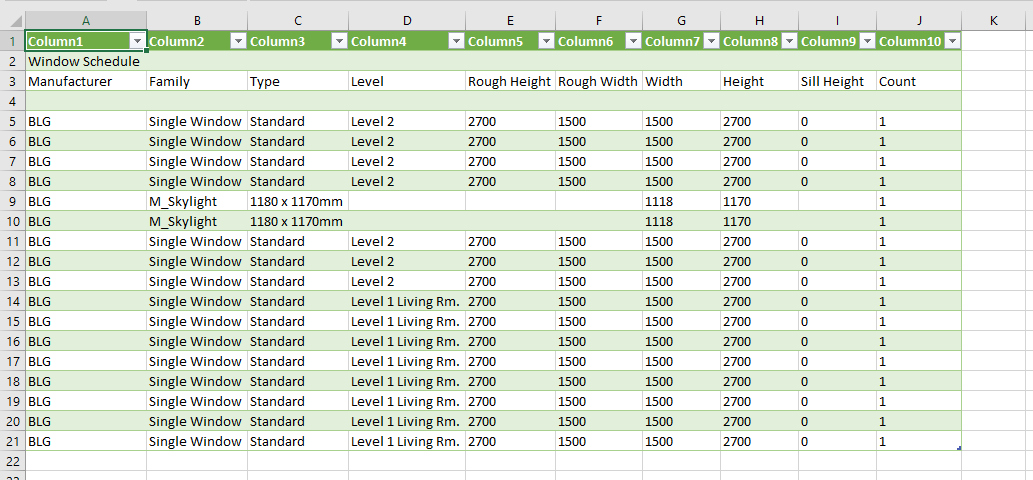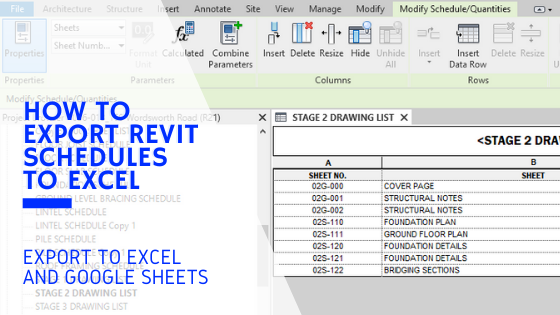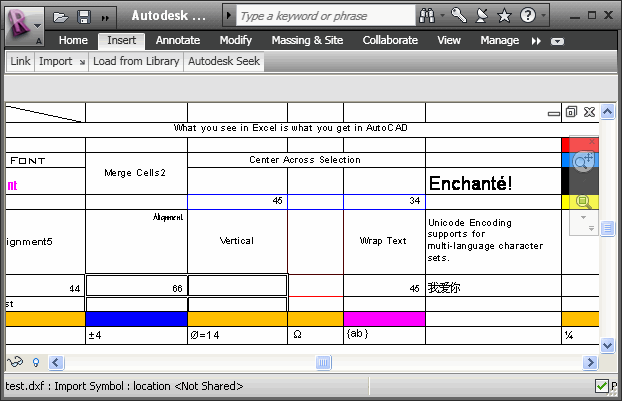Opening New Capabilities: Boost Revit Tools with the Right Plugins
Wiki Article
Understanding the Art of Data Combination: Exactly How to Seamlessly Import Excel Info Into Revit
In this short article, we will certainly guide you through the process of grasping the art of data combination. Get prepared to prepare your Excel information effortlessly and follow our detailed overview to import files into Revit. With our best techniques, you'll accomplish information integration success in no time.Comprehending the Significance of Information Assimilation in Revit
Recognizing the value of information combination in Revit is crucial for seamless importing of Excel files. When you incorporate information from Excel right into Revit, it enables you to effectively update and handle information throughout the whole task. This integration ensures that your layout and building and construction procedure is current and precise.By integrating information, you can quickly import and upgrade parameters, routines, and even geometry in Revit. This eliminates the demand for hands-on data access, saving you time and reducing the threat of errors. With Revit's data combination capabilities, you can keep consistency and accuracy in your task, while likewise improving partnership among group members.

Discovering the Excel Documents Layout for Revit Assimilation

In order to successfully integrate Excel documents into Revit, it is important to ensure that the data is formatted properly. This includes effectively labeling rows and columns, along with structuring the information in a means that is compatible with Revit's data schema. Revit makes use of details criteria and categories to arrange data, so it is essential to straighten the Excel data with these specifications to guarantee a seamless integration.
Additionally, it is very important to keep in mind that Revit only sustains specific information kinds when importing from Excel. These include message, numbers, and days. Any type of various other data types, such as solutions or conditional formatting, will certainly not be recognized by Revit and might cause problems throughout the integration procedure.
Preparing Your Excel Information for Seamless Import Into Revit
To make sure a smooth integration process, you'll require to properly style and tag the columns and rows in your Excel information prior to importing it right into Revit. Because it enables Revit to properly analyze and organize your data, this action is vital. Beginning by examining your Excel data and determining which rows and columns contain appropriate info for your Revit task. After that, ensure to label each column with a clear and detailed header. This will certainly help you and others quickly comprehend the function of each column and stay clear of complication throughout the import procedure.Following, ensure that the information in each column is properly formatted. For instance, if you have a column for dimensions, ensure that all measurements are continually formatted in the exact revit plugins same systems of measurement. Revit counts on consistent formatting to properly analyze and import information.
Furthermore, it is very important to check for any empty cells or disparities in your data. Revit might not have the ability to check out or import data from cells that are vacant or have errors. For that reason, it is recommended to assess your Excel information and tidy up any incongruities prior to importing it into Revit.
Step-By-Step Overview to Importing Excel Data Into Revit
When you have actually correctly formatted and labeled your Excel information, you can easily import it into Revit by following this detailed guide. To start, open Revit and browse to the "Insert" tab. import excel into revit.Following, a dialog box will certainly show up, permitting you to tailor the import setups. Right here, you can select the worksheet you want to import, define the series of cells to import, and choose the proper systems for your data. Once you have actually made your options, click "OK" to proceed.
Revit will certainly now display a preview of your Excel information. Take a minute to ensure and examine the sneak peek that everything looks appropriate. If required, you can make changes to the import settings by clicking on the "Settings" switch.
Ideal Practices for Data Integration Success in Revit
Make certain you adhere to these ideal practices to guarantee effective combination of data in Revit. Primarily, it is critical to organize your information in Excel prior to importing it into Revit. This means ensuring constant calling conventions, proper format, and accurate information representation. Next off, utilize Revit's integrated devices for data mapping. This will certainly allow you to match the columns in your Excel documents with the matching parameters in Revit. Be conscious of the data and units kinds when mapping the information, as any disparities can bring about mistakes in the assimilation procedure.One more essential technique is to on a regular basis verify and upgrade your data. In addition, make use of information validation devices within Revit to determine any kind of mistakes or variances in the integrated information.
Lastly, it is advised to establish a clear process for information combination. This consists of defining obligations and roles, setting up an interaction channel in between employee, and establishing a routine tempo for data updates and testimonials. By following these finest techniques, you can guarantee a smooth and effective assimilation of data in Revit, eventually enhancing the performance and accuracy of your job.
Verdict
In verdict, mastering the art of data combination is vital for smooth import of Excel files into Revit. Comprehending the significance of data integration in Revit is the first action in the direction of effective combination.When importing data from Excel into Revit, it is essential to understand the file layout and just how it can impact the integration process (revit tool). Revit makes use of certain specifications and categories to organize information, so it is crucial to line up the Excel data with these criteria to make certain a smooth integration
Be conscious of the data and systems kinds when mapping the data, as any kind of discrepancies can lead to mistakes in the assimilation procedure.
In addition, make use of data validation devices within Revit to recognize any errors or incongruities in the incorporated data.

Report this wiki page